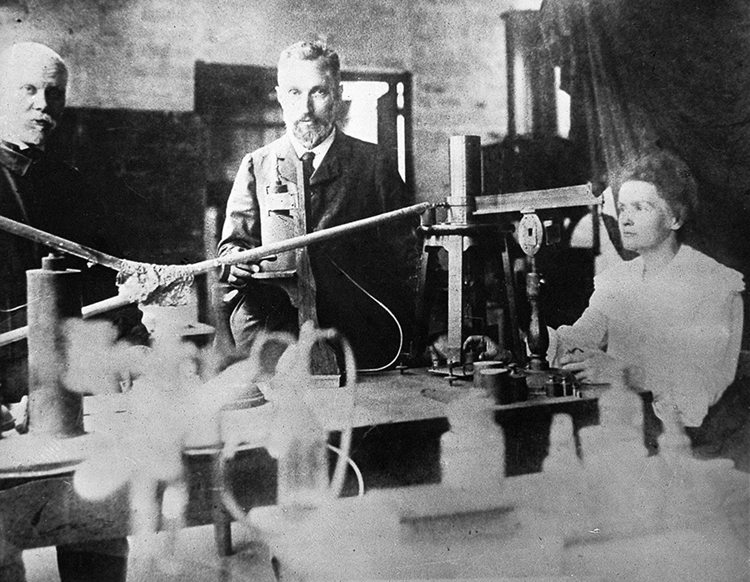Polish-born French physicist Marie Curie was born 150 years ago today on Nov. 7, 1867. Curie, famous for her research on radioactivity, was the first woman awarded a Nobel Prize. She was the first person to win two Nobel Prizes, receiving one in physics and one in chemistry. She was also the first woman to teach at the Sorbonne, a famous university in Paris.
Curie and her husband, Pierre, also a physicist, worked together in the late 1890's. They studied the radiation given off by such chemical elements as uranium and thorium. They found that uranium ore called pitchblende gave off much more radiation than could be accounted for by the amount of uranium in the ore. The Curies then searched for the source of the additional radiation. In 1898, they announced their discovery of two previously unknown, highly radioactive elements. They named the new elements radium and polonium. The French chemist Gustave Bémont helped in the discovery of radium. The Curies worked to separate tiny amounts of these elements from tons of pitchblende.

Marie theorized that radioactivity was a property that was linked to individual atoms rather than one that depended on the arrangements of atoms in molecules. Later, other scientists showed that polonium and radium developed from the original uranium atoms. The new substances were created by a process called radioactive decay or transmutation. That is, the uranium atoms had changed from one element into another by giving off radiation. Previously, scientists had not known that atoms could change in any way.
The Curies’ work was inspired by Antoine Henri Becquerel, a French physicist who had also conducted research on radiation. In 1903, Becquerel and the Curies won the Nobel Prize in physics. Becquerel received the award for discovering natural radioactivity. The Curies got the prize for their study of radiation. In 1911, Marie Curie won the Nobel Prize in chemistry for her discovery of the new elements and her work in isolating radium and studying its chemical properties. Marie Curie died on July 4, 1934, of leukemia. Years of exposure to radiation probably caused the illness.
Untitled Document
Can't view the linked articles? Subscribe to World Book Online

World Book Online delivers a progressive sequence of core databases supported by supplemental
tools, such as language translation, graphic organizers, and unique Webquests. Moving from
Early World of Learning to World Book Advanced, World Book Online aligns end-users with their
appropriate learning levels. Each stand-alone site provides additional features to support the
needs of users’ specific capabilities.
The World Book Difference
World Book combines cutting-edge technology with traditional editorial excellence to produce
authoritative, trustworthy, and unbiased content. The digital content is updated in real time and
carefully curated for each learning level. Accessible 24/7, the content is available on a variety of devices.
World Book Online combines 21st-century instructional techniques with timely information.
By breaking down complex topics and using easily understandable text, World Book Online helps to
build fluency and increase comprehension. Featuring single sign-on capability, these sites are paired
with highly visual content to engage even the most reluctant reader. Our collection of resources kindles
a lifelong learning experience for every user. This adherence to clarity, currency, and accuracy makes
World Book’s digital offerings an information hub for the classroom, library, and beyond.
Image 1: Marie Curie in her Paris laboratory. Credit: Wellcome Library, London (licensed under CC BY 4.0)
Image 2: The husband-and-wife team of Pierre and Marie Curie, with help from the French chemist Gustave Bémont (at left), isolated the radioactive element radium in 1898. Credit: © AP Images